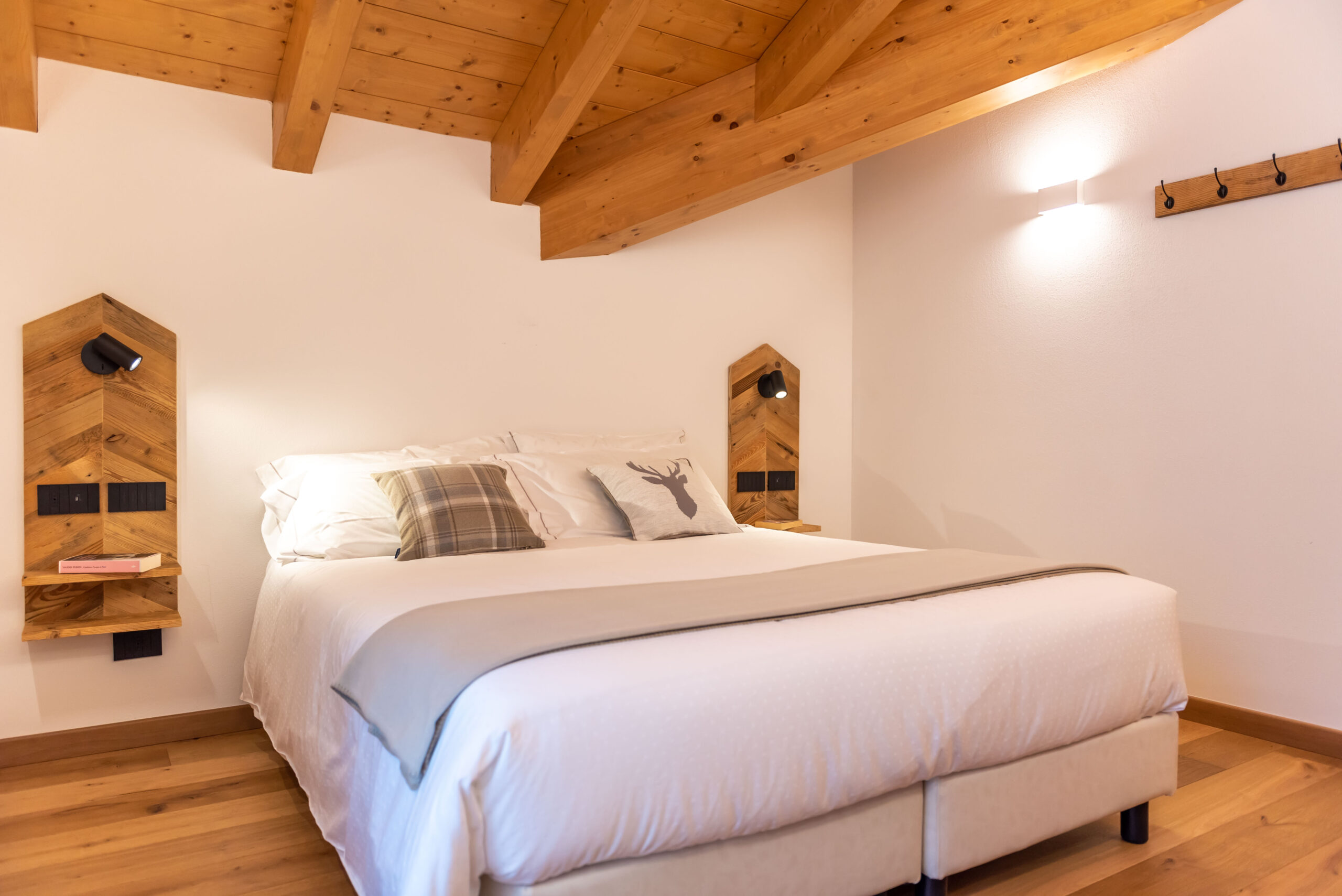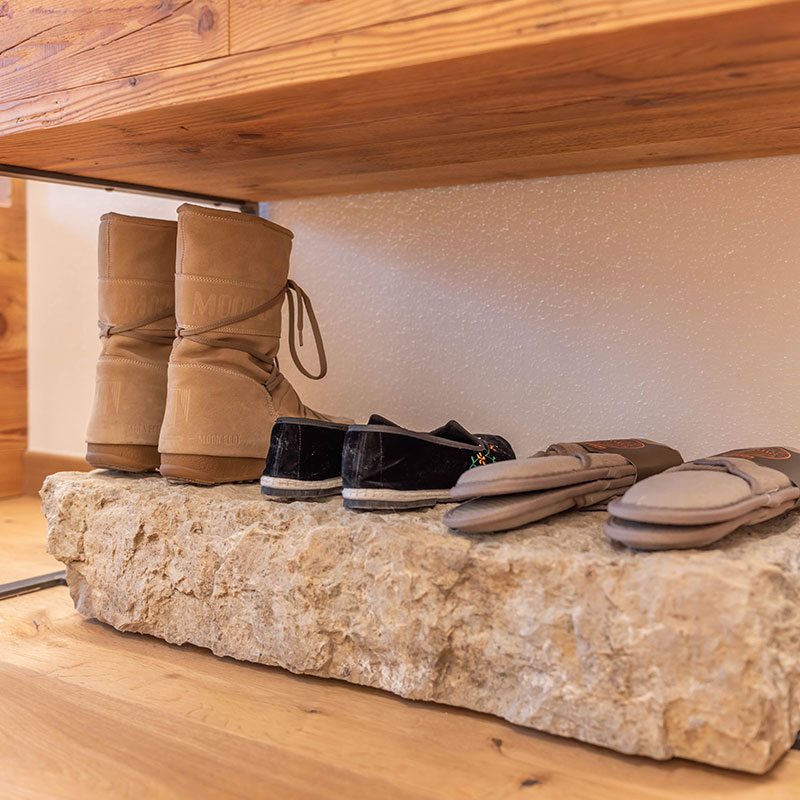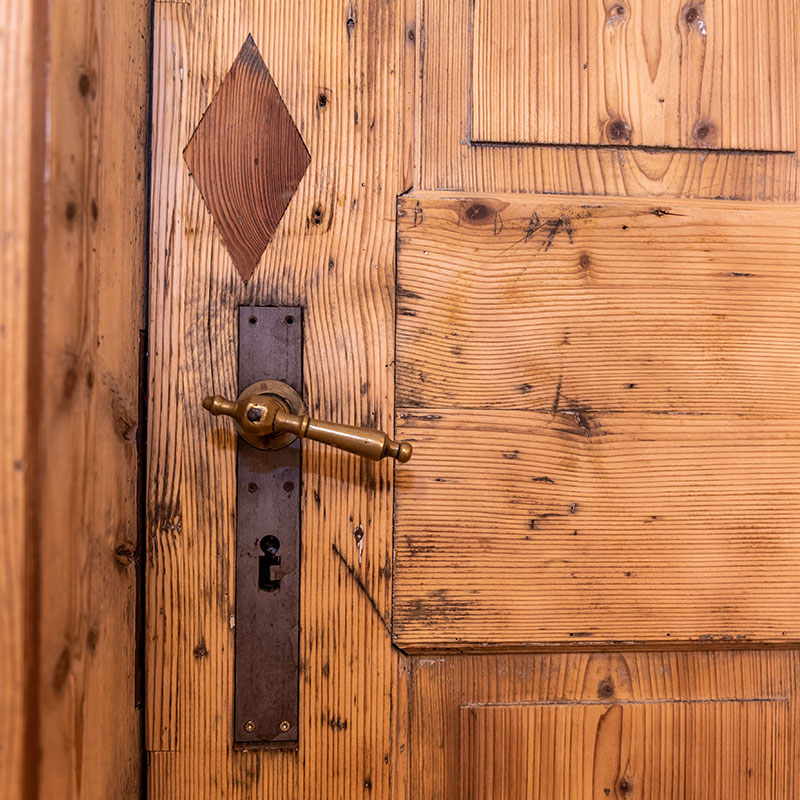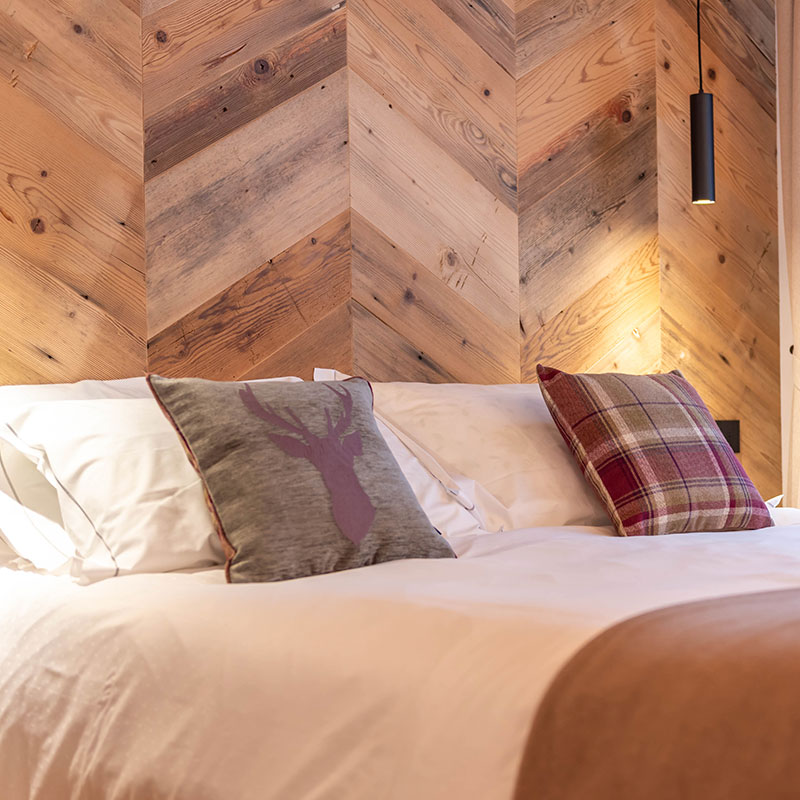
The origins of the El Lares Bed and Breakfast
The El Lares Bed and Breakfast was born at the end of 2022 from our deep passion for hospitality and love for the Dolomites. Guided by the desire to share the beauty and tranquility of this unique place with guests, we decided to turn our vision into reality.
Every detail, from the welcoming rooms to the warm atmosphere, has been taken care of with dedication to offer an elegant and unforgettable refuge immersed in the breathtaking nature of the Dolomites, preserving the history of the site on which it stands.
The name of the Bed and Breakfast, in fact, derives from Ladin, the language spoken in the Dolomite valleys which has origins dating back to the first century AD.
“El Lares” in Venetian Ladin means larch, a very common tree in the woods of Canale d'Agordo.

Home/shelter

Larch branch

El Lares
Our values: attention to the past, present and future
We at the El Lares Bed and Breakfast pay great attention to detail to give value not only to the present moment, but also to the past and the future:
History and tradition
We safeguard the past through attention to the resources offered by the Canale d'Agordo area. For example, we decided to use mainly local larch and fir wood, also reusing elements of the historic building that stood here before the Bed & Breakfast.
Comfort and wellness
We value the present committing ourselves to guarantee comfort and well-being to our Guests through complete services that benefit from the latest technological solutions.
Nature and sustainability
Finally, we protect the future committing ourselves to making sustainable choices for nature, such as geothermal heating and the use of eco-sustainable products.
Canale d’Agordo
(Canal in Ladin, Forno di Canale until 1964)
The town is located in the Biois Valley, at the confluence of the Biois and Liera streams and at the mouth of the Garés Valley.
It is surrounded by important Dolomite peaks such as Civetta, Pelmo, Cima Pape, Sass Negher, Pale di San Martino, Cimon della Pala, Cime d'Auta and the Marmolada.
Here is a brief overview of its history:
About
Canale d'Agordo has very ancient origins, dating back to Roman times. The first evidence of the existence of the town is found in a document (bull of Pope Lucius III) from 1185, where it is mentioned together with the church of San Simon di Vallada, then called San Simon di Canale. Around the 14th century, the mining industry began in the iron, lead and mercury quarries of Sass Négher and Sàis, mountains in the Val di Garés; thus the forges for melting metals were born in the localities of “I Forn” and “Medevàl” and thus Canale became the second important mining center of the Agordino after Agordo. Excellent swords were forged for the Serenissima with the iron from these foundries. In the 19th century tourism began to flourish with the birth of the first "Al Gallo" hotel in the Val del Biois; it was used by the first hikers (such as Francis Fox Tuckett, John Ball, the geographer Giovanni Marinelli and Alfred Von Radio-Radiis) who descended from the Pale di San Martino across the Comèlle plateau.
Culture
The municipality is rooted in its Ladin culture and the Union Ladina Val Biois is present to keep these traditions alive. However, the Tyrolean influence is also felt, because the valley acted as a border with the old Tyrol.
Cusine
The typical local product is "Pastim" (in the lower Belluno area and in the Feltre area it is called "Pastin"), included in the list of traditional Italian agri-food products. It can be eaten raw, grilled or inside a sandwich called panet col Pastim. The traditional dessert is Carfogn (small crostolo filled with a mixture of poppy seeds for food use) and "Lasagne da Fornel". Instead, as in the other Ladin areas, we find the Fortaie (introduced with the various work migrations in the German-speaking valleys).
Civil architecture
Religious architecture
The Pieve or Arcipretale church in Papa Luciani square.
The church of the Beata Vergine delle Grazie and San Gottardo in the 14th century hamlet of Garés.
The church of the Santo Spirito in the hamlet of Carfon from 1717.
The oratory of the Beata Vergine Addolorata in the hamlet of Fregona in 1926.
The oratory of the Santissimo Redentore in the hamlet of Feder in 1933.
The numerous votive capitals throughout the town (called Atriòl), worth mentioning is the oldest from 1800 in via Rividella
The historical details

The step
The stone step that you find in the wardrobe area of your room comes from the old staircase of the building that stood on the site of the current Bed and Breakfast. As well as the fireplace surround in the breakfast room.

The door
The entrance door to the bedroom area on the second floor was the entrance to the old house. We wanted to recover it and give it new life.

The wood
The wood used for the wall coverings, furniture and doors of the bedrooms and the breakfast room is the result of the patient recovery of the ancient floors of the old house, reused thanks to local craftsmanship.

